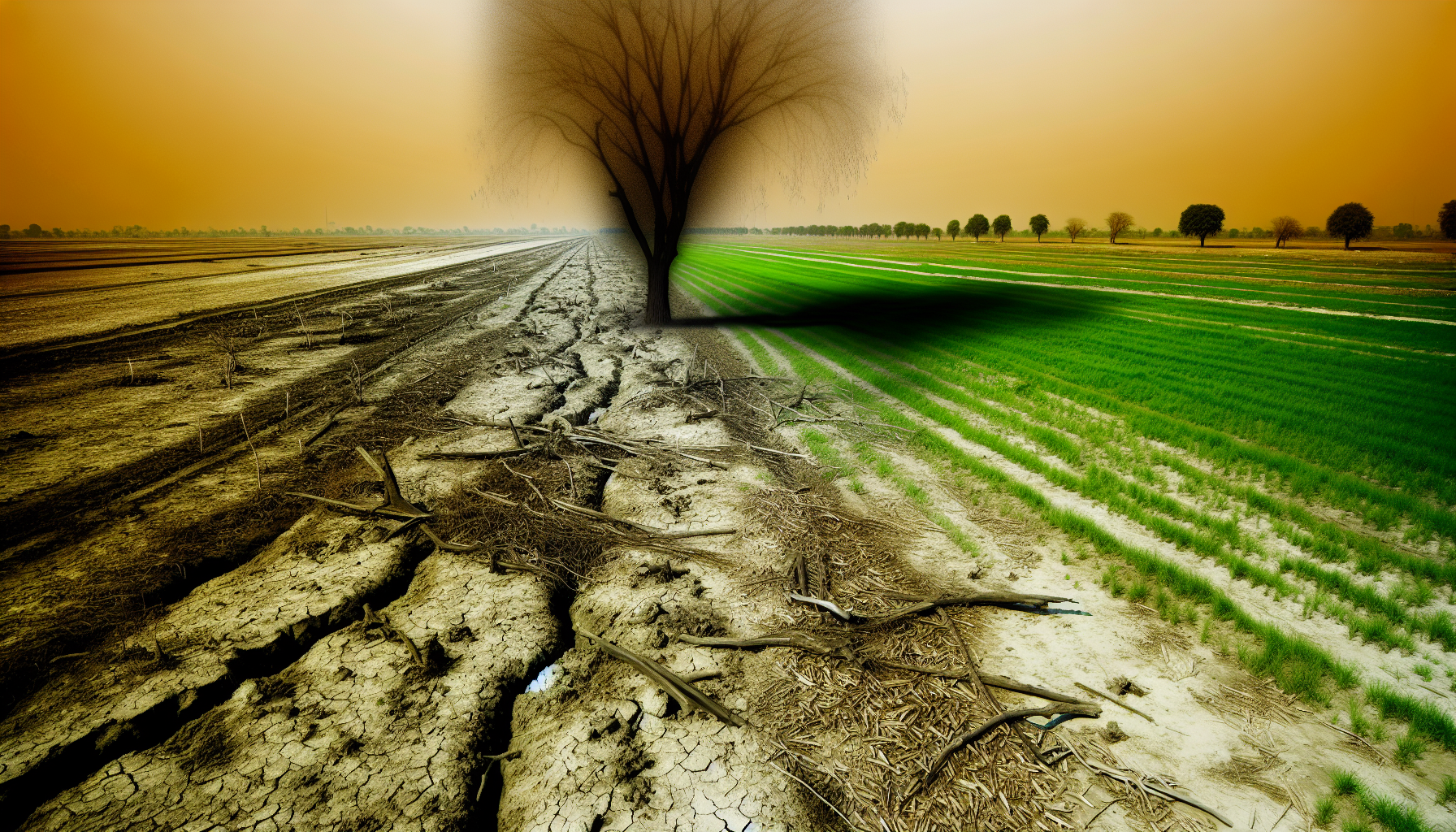In an era where the Earth has sighed its last breath of fertile promise, we find ourselves grasping at the straws of yesterday’s fields. ‘When the Ground Gasps’ is not merely storytelling—it’s a transmission from a future we are penning with each parched day.
Our world, once veiled in abundant hydration, now faces a creeping crisis beneath our feet—vanishing soil moisture. This is not the dry text of a scientific journal; it’s the brittle pages of our reality. The tenuous thread that connects life and land dangles precariously as moisture evaporates into a forgotten dew. Agricultural heartlands that once bustled with verdant vigor now cradle dust.
We traverse landscapes where farmers gamble on rain and governments wage wars over dwindling aquifers. With each step, the crunch of desiccated earth a stark reminder of how this hydration heist perpetuates hunger and conflict. The specter of desertification, the new urban sprawl, looms, and with it, a question—has hope itself become an endangered species?
Experts like Dr. Sahara NoMore depict a grim tableau of the consequences of inaction. Mired in debates of policy, our global community grapples with feeding an insatiable population on lifeless soils. However, in the maze of despair, innovative whispers of hydro-retentive technologies suggest hints of reprieve—could these be the mirage we so desperately seek, or are they stepping stones to toiling redemption?
Embarking on a journey across continents, we visit the once bountiful breadbaskets, now echo chambers of abundance. We meet those who confront the invisible adversary that is soil moisture loss—scientists, farmers, and revolutionaries of conservation alike. They share tales of cunning adaptation and somber acceptance in a world where the rules have changed, and the game has turned ruthless.
The scales of balance tipped, we reveal the intricate dance between water conservation and sustainable farming—a ballet performed on a global stage, fraught with missteps and dire consequences. The delicate art of water harvesting, the harnessing of ancient wisdom and cutting-edge innovation, is portrayed not as an option but a necessity.
With visuals that scar retinas and prose that sears the conscience, ‘When the Ground Gasps’ paints a portrait of a world betrayed by apathy. It leaves an indelible mark, a haunting image of the cascading consequences of ignoring the cries of our gasping ground. And so, we are left to ponder: will we heed the warning, or will we be content to witness the last breath of a dying land?
In this desolate conception of the living present, no grass is greener, no river lusher. The verdure of the past seems a myth to the children of dust. And in this stark narrative, we spin the yarn of our own undoing, or perhaps, we knit the resolution to a plight of our own making.
Turn these pages, and you shall not find hope, for it has withered like the roots of the once-thriving soul-soil. But you will find a truth that demands action. Indeed, the ground gasps for it.
